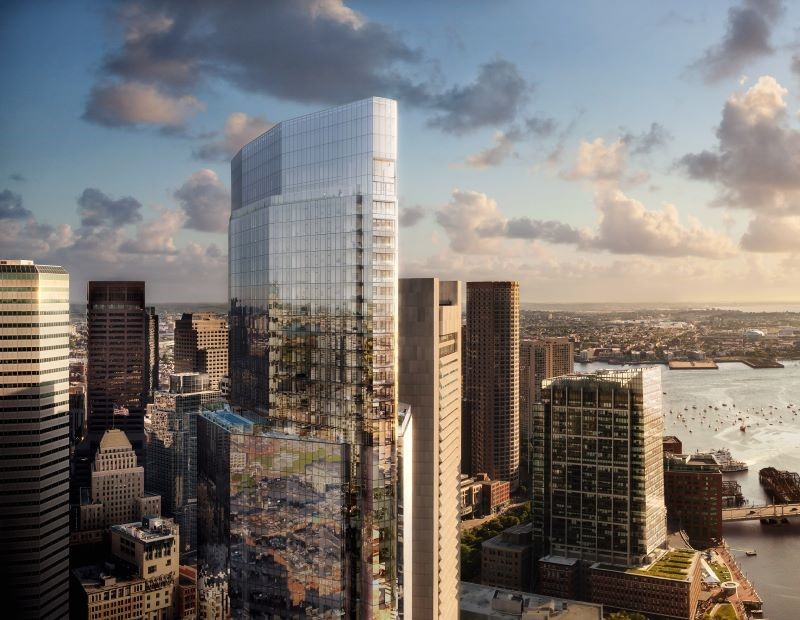Key Considerations for Adaptive Reuse Projects
An array of economic incentives may be available to help transform existing buildings, says Kymn Harp of Robbins, Salomon & Patt.
Breathing new life into old buildings is the essence of adaptive reuse. Visionary developers adapting substandard and functionally obsolete buildings to accommodate uses relevant to today’s marketplace serve to revitalize our communities by pumping new life into local economies.
Developers have three basic choices for development in densely developed areas. Upgrade an existing building to continue its current use, demolish a building and rebuild from the ground up, or adapt an existing building to a new use to better serve current market demand.
Depending upon the precise nature of the redevelopment project, the project characteristics and project location, a wide array of economic incentives may be available to facilitate adaptive reuse of existing buildings.
Candidates for adaptive reuse
Look around. What could become of the stately building at a prime location that has become functionally obsolete? Or that building with beautiful architecture but an outdated interior design and mechanical systems? Or that landmark building with historical or cultural significance but no current economically viable use? These, and more, are each candidates for viable adaptive reuse.
Economic incentives
An advantage to adaptive reuse of existing buildings is the availability of state, local, or federal economic incentives to help fund the redevelopment project.
Tax increment financing (TIF) statutes often exclude the cost of constructing new buildings as costs eligible for reimbursed, while allowing reimbursement of many redevelopment costs incurred to renovate and adapt an existing building. TIF eligible costs typically include environmental remediation costs, certain property acquisition costs, and a wide range of infrastructure costs, among others.
Likewise, historic preservation tax credits may be available for adaptive reuse of a certified historic structure, and for non-historic buildings built prior to 1936. In each case, historic preservation tax credits are available only for adaptive reuse of eligible existing buildings.
In addition, municipal economic development incentives are often available to support adaptive reuse, such as real property tax abatements, sales tax revenue sharing, exemption from transfer taxes, and waivers of various municipal fees. Where a municipality is motivated to revitalize a blighted urban area as part of a carefully considered redevelopment plan, even general funds of the municipality can be made available for redevelopment if necessary.
Sustainability
Apart from government funded economic redevelopment incentives, adaptive reuse of existing buildings and structures can impart built-in cost savings by utilizing existing foundations and structural components. It may be more cost-effective to reuse what exists instead of demolishing and building anew. Reusing what exists also supports environmental sustainability by reducing the need for new building materials.
Due diligence concerns
Deciding to adapt an existing building for reuse requires a heightened degree of due diligence to investigate the condition of the existing structure and to redesign current systems and building configuration to accommodate the new use. In addition, all usual factors for successful development must be investigated and confirmed.
There are four areas of concern to be investigated with due diligence when considering a project to adapt an existing building for reuse. They are the same four areas of concern as exist in all commercial development but demand even greater attention when applied to adaptive reuse. The four areas concern are (i) market demand, (ii) access, (iii) use, and (iv) finances.
Market demand
When considering adaptive reuse of any existing building for a new commercial project, it is fundamental that the developer must consider and confirm with a reasonable degree of certainty whether there will be sufficient marketplace demand for the envisioned new use once completed. If adequate demand is absent at the time the project is to be placed in service, the project will fail.
Access
Provided required demand is confirmed, a developer must consider adequate access to meet the needs of consumers and users of the newly adapted building. Consideration must be given to the sufficiency of roadways serving the project, traffic flow, availability of parking for tenants and their employees, customers and other users, drives and loading docks for delivery vehicles, availability of public transportation, ease of access by pedestrians, availability of passenger and freight elevators if appropriate, compliance with the Americans with Disabilities Act, and other factors that may affect accessibility for all who are expected to occupy, use or service the building.
If required to meet the business demands or personal preferences of future occupants and users within the project, due consideration must be given to assuring access to wi-fi networks, fiber optics and cable, or other means of accessing digital information.
Use
Once adapted to a new use, can the property be used as intended? Consider zoning and private land-use controls, existing easements and leases, available utilities, environmental concerns, structural issues and design limitations, capacity limits, condition of the roof, windows, wiring, plumbing, foundation, HVAC mechanicals, required licensing and other factors that may impact the ability to use the adapted project as intended.
Finances
Since any project must be economically sustainable, the developer should calculate with a reasonable degree of certainty both the hard and soft costs to be incurred to complete the project, as well as all costs of equity and debt financing, as compared with the revenue stream expected to be generated by the project.
Physical limitations discovered during the due diligence investigation of the use and access areas of concern can almost always be fixed, but those fixes will cost money. Consider opportunities to offset development costs with government economic development incentives when available. When circumstances permit, a developer may also wish to consider opportunities for ancillary income streams from the licensing or sale of naming rights for the project or any special features within the project.
Adaptive reuse of existing buildings promotes sustainability and presents an opportunity to blend the past with the present to accommodate the needs of the future.
R. Kymn Harp is a shareholder at Robbins, Salomon & Patt Ltd., with four decades of experience representing clients in their complex commercial real estate transactions. Harp can be contacted at rkharp@rsplaw.com or 312-456-0378.








You must be logged in to post a comment.